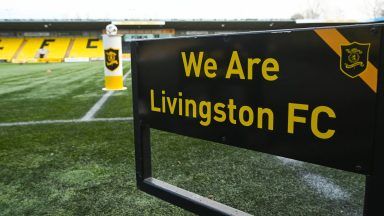The road from Scotland to Italy isn’t one of the most well-travelled in football.
Fans watching Serie A since it hit UK television screens in 1990 have seen scores of global superstars take to the pitch in Milan or Turin or Rome, but won’t have seen much in the way of Scottish talent.
Graeme Souness, Joe Jordan and Denis Law famously starred for Sampdoria, Milan and Torino in years gone by, while Rose Reilly, trailblazer of Scottish women’s football, made the journey decades ago to become a star who was unknown in her homeland.
More recently SWNT forward Lana Clelland left Spartans for Bari before moves to Tavagnacco and Fiorentina and former Celtic youngster Liam Henderson has been with Bari, Hellas Verona and Empoli, making a handful of Serie A appearances.
Hearts’ teenage sensation Aaron Hickey is set to be the latest to try and make his mark in the Italian top flight as he heads out to finalise his move to Bologna.
The full-back’s rise to prominence has been rapid and his transfer comes just 16 months after his professional debut. A favourable first impression was compounded with a start in the Scottish Cup final weeks later at the age of 16.
A starring role in the Edinburgh derby added to the excitement building around the young defender, as he played both right- and left-back before scoring the winner against Hibs, and inevitably, Hickey began being linked with a move to a bigger side before he had even staked out a corner of the changing room for himself.
Then Hearts boss Craig Levein explained exactly why clubs would be tracking Hickey’s every movement.
“I’ve never seen a player as comfortable on both sides which in the full-back position makes him helluva valuable because he can play both,” he said.
“I’ve never seen a player like Aaron who can go to one or the other and it doesn’t faze him in the slightest. He is genuinely the most two-footed I’ve ever seen.”
This summer, with Hearts preparing for a season in the Championship and resigned to losing the rising star, Bayern Munich, Lyon and Celtic showed interest but Bologna made their firm offer and the next step is for the 18-year-old to sign his contract and get to work.
Hickey may not start as first choice at the Renato Dall’Ara stadium but Levein has backed him to be a success, citing his level head and good attitude as attributes that will help him maximise his undoubted talent.
If he can do that and establish himself as a first-choice player in a top-five league then the sky is the limit.
Given his potential, the attention, speculation and discussion around the move is unsurprising.
The interest is also because of the rare nature of a Scottish player heading to the continent, though there are signs this summer that it may be part of a trend.
Along with Hickey’s switch to Italy, Scotland under-21 striker Fraser Hornby has made the move to Reims in France, while 16-year-old Barry Hepburn has joined Bayern Munich from Celtic, following Liam Morrison who signed for the German giants last year.
If the next generation of Scottish talent embraces the idea of a move abroad, rather than south, as a desirable and natural step in a top-level career, then it can bring rewards not only for the player, and the clubs who bank the transfer fees, but also for the national team.
When Steve Clarke’s Scotland team kicked off against Czech Republic on Monday night, the focus was on the hosts being forced to pick a squad from their domestic league because of a coronavirus outbreak in their initial squad.
Clarke’s team though, was drawn entirely from the UK, with only Oli Burke having any experience of playing for a side in continental Europe.
Watching Scotland struggle despite having players from a higher level than their opponents there were plenty of reasons being suggested as the cause of their problems. The unfamiliar system was a major factor, and a lack of competition for places in the squad may be another argument but there also the suggestion that having an entire squad drawn from a monoculture may not be healthy.
Looking at nations of a similar size to Scotland who are enjoying more success in international competition, it’s interesting to note that their players are drawn from clubs across the map.
Maybe Hickey and the others who have chosen the adventurous route can help the national cause down the line by bringing experience of different footballing cultures to the table.
Henderson, now two years into his stay in Italy, and having had the benefit of a loan spell in Norway during his time at Celtic, certainly believes a different style has helped him to grow as a player.
“If you go to another country you’re learning another side of football that you’ve never been taught, every country has their own way of teaching football,” he told Youth Football Scotland in July.
“I’ve had the Scottish way, been to Norway and now I’ve been in Italy for a good part of my career so I’ve learned a lot.
“Tactically, discipline and also the technical side of the game has come on leaps and bounds. I’ve improved so much since I first came.”
Scottish football has reaped the benefits of quality imports from continental Europe over the years and seen clubs thrive with foreign stars.
A growing export business would not only help the domestic game in financial terms but might be the catalyst for the national side to get the chemistry right in years to come.




























